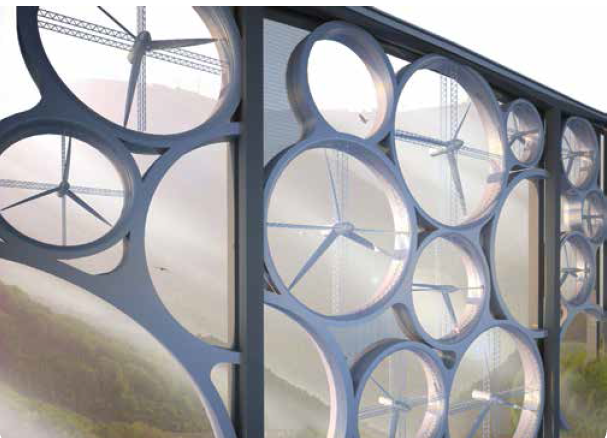Our psychic “Old Moore” has come up with some crazy ideas. Among them were solar roadways and lab-grown meats. Deemed wildly crazy at the time of publishing, here were are nearly a decade later, and both of these things are happening as we speak.
So what’s the next crazy prediction he says will happen for sure? An Ireland to Britain bridge linking Dublin with Holyhead in Wales. And not only that, it will pay for itself by generating power in three different ways: solar, wind and wave. And there’s more: the bridge will be habitable. Yes, there will be accommodation clusters all along the bridge. And shops!


This land link will provide jobs for multiple people, and will become part of both economies. The idea of a permanent land link between Ireland and the UK isn’t new. In fact, it has fascinated engineers and politicians for generations.
In 1885, a magazine called Irish Builder and Engineer said a tunnel under the Irish Sea had been discussed “for some time back.” In 1897 a British firm applied for £15,000 towards the cost of carrying out borings and soundings in the North Channel to see if a tunnel was viable. This idea is still current, especially considering the incredible amount of traffic going between both countries.
Why Build A Bridge?
Today, the Dublin-London air route is the second-busiest air route in the world. Almost 4.5 million people flew between Dublin and London last year. Then there’s the ferry passengers. The amount of people crossing these waters is huge. An Ireland to Britain bridge would open up this heavily trafficked route even further, bringing economic advantages, strengthening our trade partnership with the UK, and possibly easing Brexit difficulties. Plus, an engineering achievement of this kind bring in tourism. (Tourism is our favourite get-rich-quick plan, and it seems to be working.)
The distance between Ireland and the UK is around the same as the Channel Tunnel which links the UK with France. The Eurotunnel transports over 20 million passengers every year, and the number keeps increasing. However, costs for building a tunnel are exponentially larger than building a bridge. Also, the underwater geography is different; an Anglo-Irish channel tunnel would be a more difficult project.
Energy Generator
But what about a bridge that paid for itself? What about a bridge that didn’t just rely on passenger tolls? A bridge that generated enough energy to power entire cities on both sides of the water? In fact, there are examples of such bridges already under design.


Coffice Architecture and Urban Planning in Italy designed a fabulous bridge called “Solar Wind.” A wind energy plant would be integrated within the structure of the bridge. And, sun-facing surfaces would be covered by solar panels. But that’s not all. There would also be a pedestrian walkway, enriched with panoramic viewing spots and solar greenhouses.


It would also be built to cope with local seismic activity. This is important when considering a bridge across the Irish Sea. In 2015, a magnitude three earthquake struck six kilometres off the Welsh coast, near Holyhead.
There’s another way to generate electricity from a bridge: wave power. Wave energy is the newest cool kid on the block in terms of renewable energy. Recently, the first commercial wave-powered station opened in the Basque seaport of Mutriku.
Waves are converted to energy when water enters specially-designed chambers where the air is compressed. The air is then and forced through an opening at the top of the chamber, which turns the turbine, generating electricity. Generating energy from a bridge across the Irish Sea in a similar fashion is entirely within reach.
Vertical Villages
Another aspect is that the bridge doesn’t have to be devoid of human life – it could hold several residential complexes. In fact, similar designs already exist. In Italy, designers were invited to submit ideas for the development of a decommissioned bridge in the Calabria region. Philippe Rizzotti Architecture came up with the concept of “vertical villages.” They envisioned the bridge with commercial units, medical centres, leisure spaces and a pedestrian promenade.
There’s no reason why an Ireland to Britain bridge couldn’t also provide accommodation for those with a love of the seafaring life. Homes could even have a private berth for boats.
When the bridge across the Irish Sea goes ahead, there will be rest stops for taking in the view and shops to visit. Sounds like everybody’s kind of drive. Especially if we take the self-driving car. Can’t wait!





